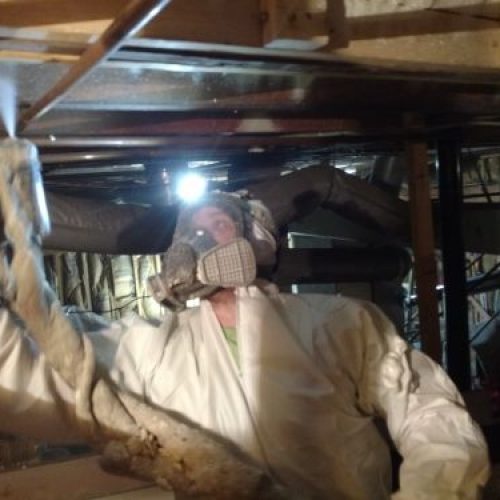Having recently spent four valuable days of my life sitting through a training certification class, I have a story for you that helps me understand that as a Home Performance professional who is motivated to inform others, I’m fighting an UPHILL BATTLE!
NOTE: This class was unrelated to my principal career, Residential Home Performance.
My instructor was strongly opinionated that sealing (and insulating) crawlspaces and attics is a big mistake. Furthermore, he repeatedly added that tightening up houses is a mistake, (even though I attempted to explain fresh air systems).
At first, I raised my hand each time this subject was mentioned, and offered my explanations (after 18 years of fixing uncomfortable homes, and being BPI certified for over 11 years). The class of 25 people was entirely made up of disaster restoration company personnel. These are the companies you call when your house floods from a broken water or sewage pipe, after a fire, when you discover mold, etc. They work with your insurance company, to clean-up your property and get it safe to live in again.
His opinions were shared by an easy majority of the class! By the end of the first day, I learned my lesson, and hushed.
In the safety of my hotel room, I thought about what I’d been hearing and narrowed down a brief list of the mistaken opinions some Atlanta homeowners mention while we’re informing them of the conditions of their homes, and. This is what we hear most often:
- Don’t I have to be uncomfortable to save energy? Actually, the opposite is true. Uncomfortable homes always cost more to heat and cool. Comfortable homes are efficient homes. But we feel that making a sacrifice will somehow have positive or productive results. (It works in dieting though… right?)
- Heat rises. No… warm air rises. We can move heat in any direction, especially downward! The 2nd Law of Thermodynamics teaches us that ‘hot always moves to cold’. If you’re sitting on a cold metal bleacher, guess from where you’re losing body heat? Yes, even when your head is covered.
- Most heat loss is through my windows (and doors). Absolutely wrong, except in very specific cases. Single pane windows, in metal frames can be huge energy hogs, (think jalousie windows). But it’s simple math. The surface area of your ceilings, floors, and walls far exceeds the area made up of windows and doors. Exceptions occur, and ‘this window’ or ‘that door’ may be a real problem spot for you. But as a whole, the uninsulated shell of the your house moves more heat than your windows.
- A larger air conditioner will cool my home better. It’s easy to assume that more is better. And too many in the HVAC industry are eager to sell you ‘bigger’! But science (again) proves otherwise. A properly sized AC system, properly ducted, will always keep a home more comfortable than a bigger unit, and for less money. Agreed, the bigger unit may blast the house with cold air, but will likely have short run cycles. Relative humidity in the house doesn’t begin to be controlled until an AC system has been running for 20 minutes. Homes with short-cycling AC systems frequently have issues with temperature swings and dehumidifying the living space.
- A larger furnace will heat my home better. It’s the same logic as applied to the bigger AC. Sure, you can blast the house with more heat, but generally a larger furnace means large temperature swings. And, oversized furnaces will often short-cycle, especially when ‘hooked-up’ to a set of ducts sized for a smaller furnace. Equipment that short-cycles has shorter life spans too.
- Just bring my insulation up to code. Please, no! Building codes are only MINIMUM STANDARDS that must be met when a house is being constructed. None of us go through life, living at the minimum standard, just passing all of life’s ‘tests’ with the minimum efforts. Do you really want to live in a house that only meets someone’s opinion of the marginal amount of insulation you need? Insulation codes are homogenized, one-size-fits-all rulings that are watered down to fit the masses, and are greatly influenced by manufacturers, builders, etc.
On the last day of my training, while standing with the group around a table stacked with half empty pizza boxes, I waded into the subject one last time. “You guys all know, when you buy a new house 10 years from now, it’s going to be a “smart house”, built almost air-tight, and probably insulated with spray foam, using the HVAC system to bring in fresh air. If it has an attic and crawlspace, they will be sealed and insulated. You know that, right?”
A couple of the guys nodded and contemplated, as we chewed on our pizza.
While others, laughing and slapping high-fives, hooted and said, “That’s job security, baby! Think of all the mold and mildew we’re going to be cleaning up!”
So, I’ve got a follow-up question, the earth seems flat too, but do we believe that?





